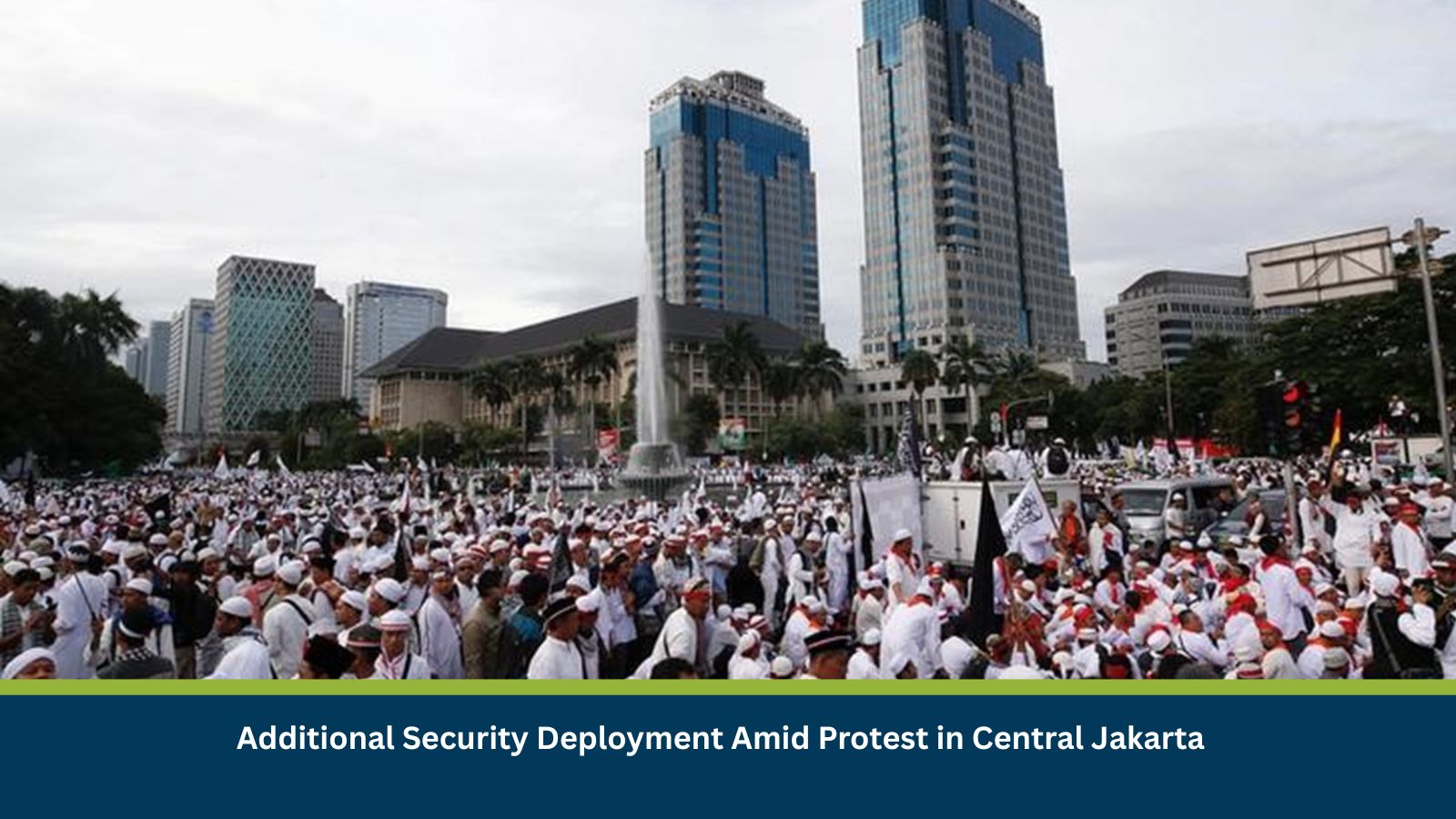What is Risk Analysis in the Context of Civil Disturbance Events
Civil disturbance risk analysis assesses threats arising from public demonstrations, protests, and mass gatherings. It examines their likelihood, scale, and potential for disruption to mobility, business continuity, and public safety. In Indonesia, particularly Jakarta, recurring protest activity around political institutions has historically resulted in traffic diversions, temporary closures, and intermittent clashes. An understanding of these patterns enables organizations to prepare for operational, reputational, and safety impacts aligned with past protest cycles.
Executive Summary
- Date of Event: 19 November 2025
- Location: Jakarta, Indonesia
- Risk Category: Civil Disturbance
- Severity Score: 3 / 5
- Confidence Level: 82 %
Authorities deployed increased security personnel across the Gambir and Medan Merdeka corridors to safeguard an ongoing demonstration. Past events in 2025 demonstrate that such activities typically lead to same-day disruptions, concentrated within a one to two-kilometre radius of central civic landmarks. While the probability of widescale violence remains low, localized mobility restrictions, crowd-management operations, and delayed access to offices are expected.
Known Hotspots and Sensitive Areas
- High Impact: Gambir Station, Istana Merdeka, Monas precinct, Jalan Medan Merdeka corridors—frequent gathering points with recurring closures.
- Medium Impact: Jalan MH Thamrin, DPR/MPR complex areas—locations with previous protest spillovers and periodic checkpoints.
- Low Impact: Outlying districts outside Central Jakarta—minimal direct exposure, though subject to secondary congestion.
Recurring patterns show demonstrations often concentrate around political buildings, with seasonal increases linked to legislative sessions or policy announcements.
Impact on Transportation and Services
Key arterial roads, including Jalan MH Thamrin and the Medan Merdeka ring, may face rolling closures, lane reductions, and diversions. TransJakarta services are likely to reroute, affecting commuter reliability. Access to Gambir Station could be temporarily restricted, impacting intercity rail passengers. Businesses within the central district may experience reduced footfall, delayed deliveries, and limited onsite staffing. Communications systems remain functional, though high-density areas may experience temporary mobile network congestion.
Recommended Actions
- Immediate Measures: Advise staff to avoid the Central Jakarta protest zone; implement work-from-home arrangements; activate an internal Incident Response Team for monitoring and rapid escalation.
- Operational Continuity: Reroute logistics and service teams using pre-identified alternative corridors; shift client meetings to virtual platforms; secure office facilities by restricting visitor access and reinforcing CCTV monitoring.
- Strategic Measures: Maintain detailed incident logs for regulatory compliance, review crisis communication templates, and coordinate closely with local police for movement advisories.
Multidimensional Impact
Traffic congestion may intensify toward airport corridors and rail nodes if diversions persist. Concurrent weather advisories or peak travel periods could magnify operational delays and complicate staff movements.
Emergency Contacts
- Jakarta Police Hotline: 110
- Jakarta Command Center: 112
- TransJakarta Information: 1500-102
Final Thoughts
The event is expected to remain localized, with disruption primarily limited to movement and access within Central Jakarta. Businesses should prioritise proactive communication, remote-work flexibility, and continuous monitoring. Leveraging early-warning platforms such as MitKat’s Datasurfr can significantly improve situational awareness and support informed decision-making during recurring civil-disturbance cycles. Stay ahead of operational risks with real-time alerts, scenario modeling, and expert advisories with datasurfr’s Predict. Start your 14-day free trial of Datasurfr’s Risk Intelligence Platform today.






